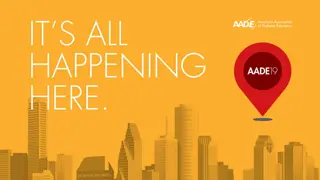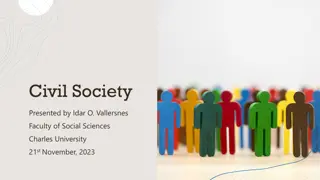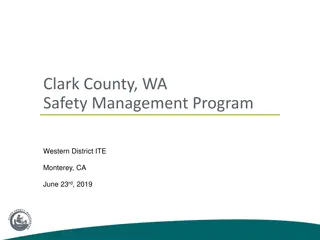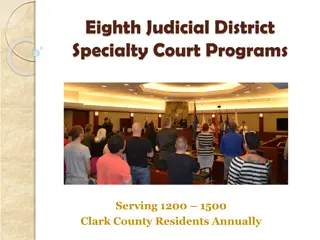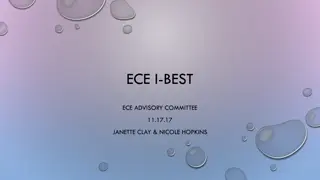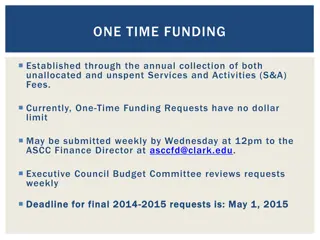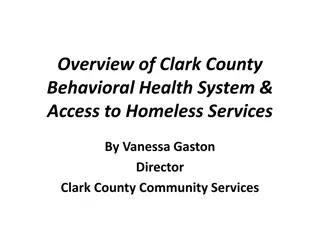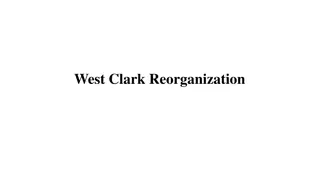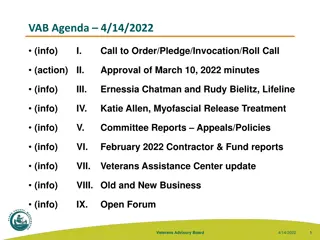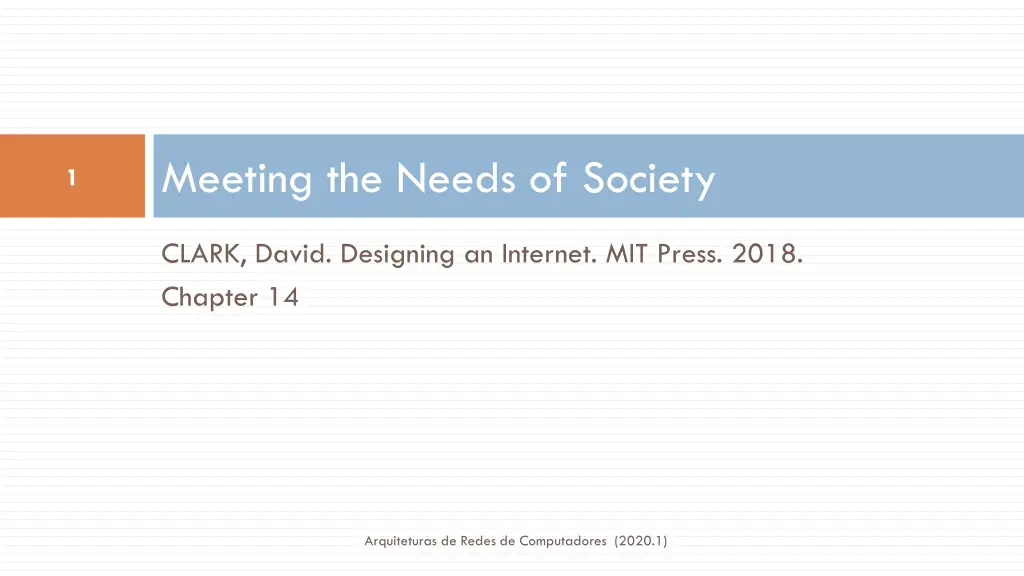
Future Internet Aspirations: Societal Concerns and Network Architecture Analysis
Exploring the desired properties of a future Internet from societal perspectives, this content delves into the challenges, aspirations, and tensions in shaping the Internet to meet various needs. From accessibility and affordability to security and innovation, the cataloged aspirations offer a comprehensive view of the future Internet landscape.
Download Presentation

Please find below an Image/Link to download the presentation.
The content on the website is provided AS IS for your information and personal use only. It may not be sold, licensed, or shared on other websites without obtaining consent from the author. If you encounter any issues during the download, it is possible that the publisher has removed the file from their server.
You are allowed to download the files provided on this website for personal or commercial use, subject to the condition that they are used lawfully. All files are the property of their respective owners.
The content on the website is provided AS IS for your information and personal use only. It may not be sold, licensed, or shared on other websites without obtaining consent from the author.
E N D
Presentation Transcript
Meeting the Needs of Society 1 CLARK, David. Designing an Internet. MIT Press. 2018. Chapter 14 Arquiteturas de Redes de Computadores (2020.1)
What do We Want Our Future Internet to Be? 2 The goal of this chapter is to identify some desirable properties of a future Internet Looking through the lens of societal concerns, and Consider what (if anything) network architecture has to do with these goals. We (Clark and Claffy, 2015) tried to collect in one paper a list of all the societal aspirations for the future of Internet. We collected statements from governments and public interest groups. We cataloged these aspirations in order to subject them to critical analysis, and motivate a debate over which of them are desirable, well-specified, realistic, and achievable. Arquiteturas de Redes de Computadores (2020.1)
What do We Want Our Future Internet to Be? 3 High-level conclusions: Not only are many of the aspirations hard to achieve, but some are incompatible with others. Many are under-specified and resist operational definition; it is unclear how to translate the aspiration to concrete goals against which to measure progress. Most of the current tools society has to shape the future of the Internet seem unequal to the task. Fundamental tussle: Navigating the inherent tension between private sector objectives and societal aspirations is essential to shaping the future of the Internet. Arquiteturas de Redes de Computadores (2020.1)
Catalog of Aspirations 4 The Internet should reach to every person by some means. (Reach) The Internet should be available to us everywhere. (Ubiquity) The Internet should continue to evolve to match the pace and direction of the larger IT sector. (Evolution) The Internet should be used by more of the population. (Uptake) Cost should not be a barrier to the use of the Internet. (Affordable) The Internet should provide experiences that are sufficiently free of frustration, fears and unpleasant experiences that people are not deterred from using it. (Trustworthy) The Internet should not be an effective space for law-breakers. (Lawful) 1. 2. 3. 4. 5. 6. 7. Arquiteturas de Redes de Computadores (2020.1)
Catalog of Aspirations 5 The Internet should not raise concerns about national security (National security) The Internet should be a platform for vigorous innovation, and thus a driver of the economy. (Innovation) 10. The Internet should support a wide range of services and applications. (Generality) 11. Internet content should be accessible to all without blocking or censorship. (Unblocked) 12. The consumer should have choices in their Internet experience. (Choice) 13. The Internet should serve as a mechanism for the distribution of wealth among different sectors and countries (Redistribution) 8. 9. Arquiteturas de Redes de Computadores (2020.1)
Catalog of Aspirations 6 14. The Internet (and Internet technology, whether in the public network or not) should become a unified technology platform for communication. (Unification) 15. For any region of the globe, the behavior of the Internet should be consistent with and reflect its core cultural/political values. (Local values) 16. The Internet should be a tool to promote social, cultural, and political values, especially universal ones. (Universal values) 17. The Internet should be a means of communication between citizens of the world. (Global) Arquiteturas de Redes de Computadores (2020.1)
General categories 7 Economics Security Utility Arquiteturas de Redes de Computadores (2020.1)
The Economics Cluster 8 Arquiteturas de Redes de Computadores (2020.1)
The Internet should reach to every person by some means (Reach) 9 The Reach aspiration is generally uncontentious; almost every country has some form of it. The differences relate to granularity (household or community?), bandwidth (how much?), and methods of achieving reach. Developed countries focus on reaching the yet unserved population, usually rural areas. In developing countries, where most of the population may not have access, the focus may be on wireless access using mobile devices. Arquiteturas de Redes de Computadores (2020.1)
The Internet should be available to us everywhere (Ubiquity) 10 The Reach aspiration has a corollary in the age of mobile communications: every person should have access to the Internet approximately everywhere they go, implying the integration of high-performance wireless technology into the Internet. Arquiteturas de Redes de Computadores (2020.1)
Cost should not be a barrier to the use of the Internet (Affordable) 11 This goal is a component of Uptake, since cost is a major barrier cited by non-users today. The phrase cost should not be a barrier could be mapped to the simpler phrase the Internet should be low-cost . However, we don t expect wine to cost as little as tap water. Low cost might map to lower value, which might be counter-productive. Perhaps an emphasis on value would be more productive as a means to uptake. Arquiteturas de Redes de Computadores (2020.1)
The Internet should support a wide range of services and applications (Generality) 12 The original Internet architecture embedded this aspiration, since it was designed to support a cooperative network of time-shared general-purpose computers. Benefits that follow from this aspiration include Innovation and Uptake, since the more value the Internet can deliver, the more users it will attract. Although there is no obvious way to quantify progress toward Generality, the range of Internet applications demonstrates its success at this aspiration. But not all applications work well on the public Internet today most problematic are those that require very high reliability and availability (e.g., remote surgery, remote control of autonomous vehicles). Does Generality imply the need to evolve to support such ambitious services, or should they be segregated to more controlled private networks? Arquiteturas de Redes de Computadores (2020.1)
The Internet should evolve to match the pace and direction of the larger IT sector (Evolution) 13 As computing evolves, so should the Internet. In 2013, the forecast growth of U.S. power consumption was 0.9% per year, while the forecast of Internet traffic growth was 23% per year. National Policy statements have often had a dual character: getting some level of broadband to everyone (Reach) and pushing for deployment of a next generation or broadband (Evolution). Arquiteturas de Redes de Computadores (2020.1)
The Internet should be a platform for innovation, and thus a driver of the economy (Innovation) 14 One interpretation of the Innovation goal is that the Internet must be open , a term used to capture many other aspirations. We believe this word is a red flag for muddy (or at least unfinished) thinking. Open is a word with strong positive connotations, useful as a rallying cry, but dangerously vague. We prefer to refer to more specific objectives: stability, specification (open standards), and freedom from discrimination or from intellectual property restrictions. But even these aspirations are not absolute. Arquiteturas de Redes de Computadores (2020.1)
The Internet should be a platform for innovation, and thus a driver of the economy (Innovation) 15 The deeper and more vexing policy question that is poorly informed by theory or fact relates to causality: What underlying properties (e.g., the aspirations Generality, Uptake, Ubiquity, Evolution, and Unblocked, or access to capital) are key drivers of Innovation? Arquiteturas de Redes de Computadores (2020.1)
The Internet should serve as a mechanism for the distribution of wealth among sectors and countries (Redistribution) 16 Contentious arguments about redistribution of capital, either to cross- subsidize from more profitable to less profitable sectors of the ecosystem (e.g., commercial to residential, urban to rural) or from more developed to less developed countries, have long characterized telecommunication policy debates and legislation. A recent vivid example is the ongoing tension as to whether high- volume (video) content providers should contribute to the cost of the infrastructure. Arquiteturas de Redes de Computadores (2020.1)
The Internet should serve as a mechanism for the distribution of wealth among sectors and countries (Redistribution) 17 In addition to cross-subsidizing across industry sectors within one country, governments also aspire to tap into international revenue flows in the Internet ecosystem. The global controversy about the role of the ITU in regulating international Internet interconnection reflects a motivation by many parties, including governments, to change the current norms for payment for the global flow of Internet traffic to be closer to historical telephony-based norms. Arquiteturas de Redes de Computadores (2020.1)
Architectural relevance 18 Reach, Ubiquity, and Evolution directly relate to the discussion in chapter 12 on the incentives of the private sector to invest. All three are capital-intensive activities and thus would seem to drive up cost, which would put them in conflict with the aspiration that the Internet be Affordable. Architectural support for mobility advances Ubiquity Arquiteturas de Redes de Computadores (2020.1)
Architectural relevance 19 Innovation and Redistribution relate directly to the discussion in Chapter 12 on money-routing across the Internet. The Innovation aspiration is almost directly an expression of hope that the infrastructure providers will spend money so that the innovators on top of that platform can profit. Put that way, it is not obvious why such a hope would come true. The aspiration of Redistribution is in some direct sense a response to the pursuit of Innovation; it is a call (among other things) for the innovators to shift some of their profits to the infrastructure providers. It is interesting that one can find this aspiration expressed in pretty direct terms by some of the actors. Arquiteturas de Redes de Computadores (2020.1)
Architectural relevance 20 Again, to the extent that there are architectural implications of this set of aspirations, chapter 12 has tried to address them. They relate to architectural modularity and what interactions among the different actors are facilitated by the expressive power of the module interfaces. Can a network architecture stimulate the creation of new services that innovators benefit from purchasing? Arquiteturas de Redes de Computadores (2020.1)
The Internet (and Internet technology) should become a unified technology platform for communication (Unification) 21 This aspiration is not directly relevant to society; IP network operators tend to share this aspiration as a source of cost savings, or more generally to maximize return on capital investment. As such, it may facilitate the pursuit of other aspirations discussed here. The Unification aspiration differs from Generality; the latter is about supporting a wide range of services, while Unification reflects the economic efficiency of discontinuing other platforms and associated investments. Arquiteturas de Redes de Computadores (2020.1)
The Internet (and Internet technology) should become a unified technology platform for communication (Unification) 22 Although Unification reduces overall costs in some areas, it also may increase costs in others, since the unified platform must support the performance of the most demanding application in each quality of service. For example, a unified IP-based platform must be reliable enough to support critical phone service and have the capacity to carry large bundles of television channels. Unification may also increase risks to National Security, since a less diverse infrastructure has a higher potential for systemic failure, although this fear is debatable. Arquiteturas de Redes de Computadores (2020.1)
Architectural relevance 23 Today, we see a two-level IP platform emerging in which ISPs build an IP platform and then run their part of the IP-based global Internet on top of it. Most of the architectural proposals discussed in this book are related to the creation of a new global Internet, not the creation of a new form of unified platform. Given the current trends in industry, it would seem beneficial to have an architectural exploration of this two-level structure. Unification can lead to a monoculture of technology, potentially increasing the risk of systemic failure and consequences for National Security. Avoiding the risks of monoculture is a valid issue to explore from an architectural perspective. Arquiteturas de Redes de Computadores (2020.1)
The Security Cluster 24 Arquiteturas de Redes de Computadores (2020.1)
The Internet should provide experiences that are sufficiently free of frustration, fears, and unpleasant experiences so that people are not deterred from using it (Trustworthy) 25 Most users hope, expect, or assume that their use of the Internet does not lead to their behavior and data being used against them. Users also need to be able to (but often cannot) assess the safety of a given aspect of their Internet usage. Today, users fear side effects of Internet use (i.e., their activities being monitored, or personal information used in unwelcome ways, such as for behavioral profiling). Users fear identity theft, loss of passwords and credentials, malware corrupting their computer, or losing digital or financial assets by having their accounts compromised. The threats are real and include not just crimes but violations of norms of behavior (e.g., spam or offensive postings). Arquiteturas de Redes de Computadores (2020.1)
The Internet should not be an effective space for law-breakers (Lawful) 26 An Internet ecosystem that cannot regulate illegal activities will make the Internet less Trustworthy and hinder Innovation, impeding the role of the Internet as a General and Unified platform. Generally, crime is a drag on the economy, and a symptom of erosion of civic character, but much of today s cybercrime is international, and there is significant variation in what different countries consider illegal, and there are inconsistent and in some jurisdictions poor tools for pursuing lawless behavior internationally. Arquiteturas de Redes de Computadores (2020.1)
The Internet should not raise concerns about national security (National security) 27 While small-scale intrusions, crimes, and attacks may alarm and deter users, a large-scale attack might disable large portions of the Internet, or critical systems that run over it. There are legitimate fears that the Internet could be a vector for an attack on other critical infrastructure, such as our power or water supply. A few attacks have risen to the level of national security concerns, but they are hard to categorize. Finally, of course, improvements to specific aspects of security may be in conflict, such as the tension between surveillance and privacy. Arquiteturas de Redes de Computadores (2020.1)
Architectural relevance 28 Privacy can either be consistent with or at odds with security It is consistent with the prevention of attacks on communication But, it may be at odds with some aspects of national security. Decisions as to whether (and to what extent) an architecture should favor privacy over accountability are potentially architectural, and certainly not value-free. There are proposals to reengineer the Internet in a more trustworthy direction, s.a., ensuring that every user s identity is robustly known at all times. These proposals raise concerns, such as loss of privacy, ease of mass surveillance, and repression of speech. Arquiteturas de Redes de Computadores (2020.1)
The Utility Cluster 29 Arquiteturas de Redes de Computadores (2020.1)
The Internet should be used by more of the population (Uptake) 30 Uptake is about getting more people to use the Internet services available to them. As more essential social services migrate to the Internet to increase the efficiency of delivering them, nonusers may be increasingly disadvantaged. This goal seems generally laudable but invites the question of whether further policy intervention is appropriate to convert the nonusers. Arquiteturas de Redes de Computadores (2020.1)
Consumers should have choices in their Internet experience (Choice) 31 There are many possible sorts of Choice in the Internet ecosystem (e.g., choice of broadband access providers or of software in an app store). Freedom of choice seems central to U.S. policy thinking, but the word choice is ill-defined Choice is described as a positive consequence of a competitive market. Competition leads to choice, and consumers will choose wisely, So competition disciplines providers toward offering products and services that consumers prefer. Arquiteturas de Redes de Computadores (2020.1)
Consumers should have choices in their Internet experience (Choice) 32 Consumers might pick a network that was more regulated, curated, and/or more stable than today s Internet. Or they might prefer a network that is totally free of accountability and thus rampant with piracy. Or they might prefer a network that is zero cost but limits the selection of applications. Overall, we found that this aspiration was ambiguous and subject to multiple interpretations as we attempted to reduce it to operational terms. Arquiteturas de Redes de Computadores (2020.1)
Internet content should be accessible to all without blocking or censorship (Unblocked) 33 This aspiration implies that ISPs and other network operators must not block or hinder access to content (network neutrality). It also implies that those with power to compel the blocking or removal of content (e.g. governments) should refrain from doing so. Of course, many blocking and censorship actions taken by governments and private sector actors are legally justified. This aspiration is not equivalent to the ideal that all information be free. Rather than describing the relationship between content producers and users, this aspiration describes the role of the Internet in connecting them. Arquiteturas de Redes de Computadores (2020.1)
For any region of the globe, the behavior of the Internet should be consistent with and reflect its core cultural/political values (Local values) 34 Values differ very much across the globe. In the U.S., the relevant values would include First Amendment freedoms (speech, association and assembly, establishment and exercise of religion, press, and petition to redress grievances), but with limitations on certain types of speech and expression. Other regions prefer an Internet that safeguards social structure or regime stability. Debate about the desirability of this aspiration is a critical aspect of international policy development. Arquiteturas de Redes de Computadores (2020.1)
The Internet should promote social and political values (Universal values) 35 This aspiration implies the existence of universal values, such as those articulated in the United Nations charter or the Universal Declaration of Human Rights, namely peace, freedom, social progress, equal rights, and human dignity. Although such values are by no means universally accepted, we can imagine translating them into the Internet. Arquiteturas de Redes de Computadores (2020.1)
The Internet should promote social and political values (Universal values) 36 Governments should not restrict the ability of their citizens to interact with people outside their borders. Analogue to freedom of movement People should be allowed to communicate directly with citizens of other states Free (virtual) assembly and speech The Internet should enable and enhance global interactions The Internet should serve as forum of an international marketplace of ideas Arquiteturas de Redes de Computadores (2020.1)
Architectural relevance 37 Any architecture that defines a general-purpose platform for the creation of services would support this basket of aspirations. The aspiration that citizens be able to communicate globally does not imply that all of the Internet experiences needs to be globally available in a consistent form. The alignment of the Internet with Local Values has a positive and a negative aspect. Positive: localized language and expectations will drive Uptake Negative: censorship Arquiteturas de Redes de Computadores (2020.1)
Architectural relevance 38 Tussle over censorship: countries have been pressuring major content providers to block delivery at the source. Providers of commercial content (music and video) usually license such content for consumption on a country-specific basis. Question: should the design make it easy or hard to determine the country (legal jurisdiction) of a particular user? In a new Internet, addresses could always be assigned on a per-country basis. An alternative would be to require that requests for content include some sort of credential of citizenship . Arquiteturas de Redes de Computadores (2020.1)
Architectural relevance 39 Nebula: might be able to embed a certificate of jurisdiction into the PoC in a nonforgeable way. NDN: the interest packet carries the name of the content being sought but not the address of the requester. We have argued, in the context of individual accountability, that identity at the individual level should not be a part of the architecture. We are less clear about an architectural binding od an internet end point to a jurisdiction. A scheme for embedding credentials into the architecture should allow for arbitrary credentials, but ISPs cannot be expected to issue or validate them. Arquiteturas de Redes de Computadores (2020.1)
Architectural relevance 40 Political science argues that avoidance of escalation is an important issue in international relations. Perhaps, in meeting the needs of society, we need to think about political compromise and not confrontation an escalation when we make value-laden architectural decisions. Arquiteturas de Redes de Computadores (2020.1)


